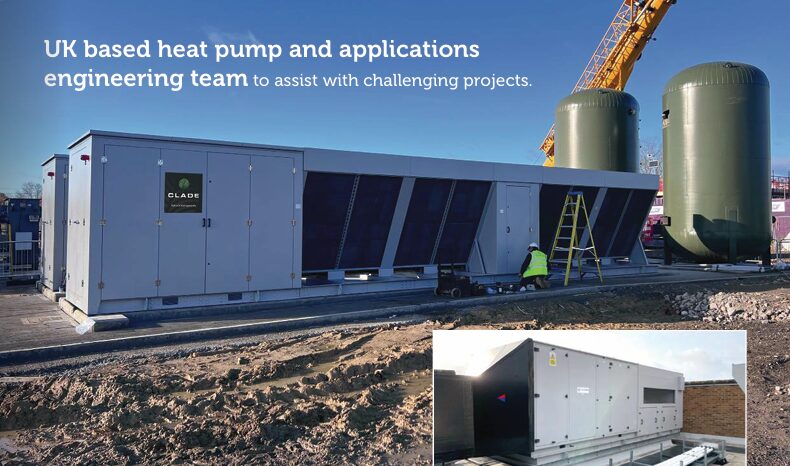Everything You Need to Know About Air Source Heat Pumps

As UK businesses continue to sharpen their focus on sustainability, many are on the lookout for innovative ways to cut energy costs and reduce their carbon footprint. Heat pumps are quickly emerging as a popular choice, providing a cost-effective and environmentally friendly alternative for heating and cooling commercial properties. Yet, as Clade Engineering, a leading manufacturer of commercial air source heat pumps, has noted, there’s still a lot of confusion out there about the different types of heat pumps available. To help clear things up, they take a closer look at air source heat pumps (ASHPs)—what they are, how they work, and why they might be the right fit for your business.
What Are Air Source Heat Pumps, Exactly?
Let’s start with the basics. An Air Source Heat Pump is a device that pulls heat from the air outside—even on chilly days—to warm up your building. Think of it like a fridge working in reverse. Instead of keeping things cool, it extracts warmth from the surrounding air and pumps it inside. ASHPs are a renewable energy option because they rely on the natural heat in the air, which is pretty much always available. Unlike Water Source Heat Pumps (WSHPs), which need a nearby body of water to function, ASHPs are much more flexible when it comes to installation since they can work almost anywhere there’s fresh air.
How Do Air Source Heat Pumps Work?
While the mechanics of an ASHP might sound a bit technical, the concept is pretty straightforward:
Heat Absorption
The pump draws in outdoor air using a fan, passing it over refrigerant-filled coils that can capture heat, even when it’s freezing outside.
Heat Transfer
This heat is then transferred to the refrigerant, which turns into a gas. This gas gets compressed, raising its temperature even more.
Heat Distribution
The hot gas moves through a heat exchanger, where it releases its heat into your building’s heating system, such as radiators, underfloor heating, or even a hot water supply.
Cooling and Recycling
After transferring its heat, the refrigerant cools down and turns back into a liquid, ready to start the whole process again.
This cycle allows ASHPs to provide a steady, reliable source of warmth, even in the coldest months.
Why Should Your Business Consider an ASHP?
So, what’s driving businesses to choose ASHPs, and why might they be a good choice for you?
Significant Energy Savings
ASHPs are incredibly efficient, with many systems boasting a coefficient of performance (COP) of 3.0 or more. In simpler terms, this means they can generate three or more units of heat for every unit of electricity they use. Over time, this efficiency can translate to significant savings on energy bills, particularly when compared to conventional heating systems.
Environmental Benefits
Because ASHPs use air as their primary heat source, they produce far fewer greenhouse gas emissions than fossil fuel-based systems. This makes them a great option for businesses looking to align with the UK’s carbon reduction goals.
Easy Installation and Flexibility
One of the biggest advantages of ASHPs is their flexibility. Unlike WSHPs, which require a nearby lake or river, ASHPs can be installed just about anywhere there’s enough outdoor space for the unit. This makes them a versatile option for various types of properties, from urban offices to rural warehouses.
Dual Functionality
Many ASHP systems can also operate in reverse, providing cooling during the hotter months. This makes them a practical, year-round solution for managing your building’s climate, handling both heating and cooling with a single system.
Things to Consider Before Installing an ASHP
While there are many benefits to ASHPs, there are a few considerations to keep in mind before making the switch:
Space Requirements: You’ll need some outdoor space for the ASHP unit. The area should be well-ventilated and free from obstructions to ensure good airflow. If your property is in a densely built-up area, finding a suitable spot might be a bit more challenging.
Initial Costs and Incentives: The upfront cost of installing an ASHP can be higher than traditional heating systems. However, government incentives like the Renewable Heat Incentive (RHI) or the Clean Heat Grant can help offset these costs, making the investment more manageable over the long term.
Noise Considerations: ASHPs do generate some noise, particularly the outdoor unit. While modern models are much quieter than their predecessors, it’s still worth considering if the unit will be near occupied spaces or noise-sensitive areas.
Regular Maintenance: Like any heating system, ASHPs require routine maintenance to keep them running efficiently. Regular checks and servicing will help ensure your system continues to operate smoothly and can extend its overall lifespan.
Looking to the Future
The demand for sustainable heating solutions like ASHPs is only going to increase. With the UK government pushing for a greener economy and more businesses aiming to lower their carbon emissions, ASHPs present a smart, forward-thinking investment. As technology continues to improve, we can expect ASHPs to become even more efficient and affordable. Businesses that make the switch now can enjoy immediate benefits while positioning themselves as sustainability leaders—a potentially significant advantage as more customers and clients value green practices.
Conclusion
Air Source Heat Pumps are a fantastic option for UK businesses looking to reduce energy costs and cut their carbon footprint. With the potential for substantial savings, straightforward installation, and a smaller environmental impact, ASHPs are well worth considering for your business’s heating and cooling needs.





